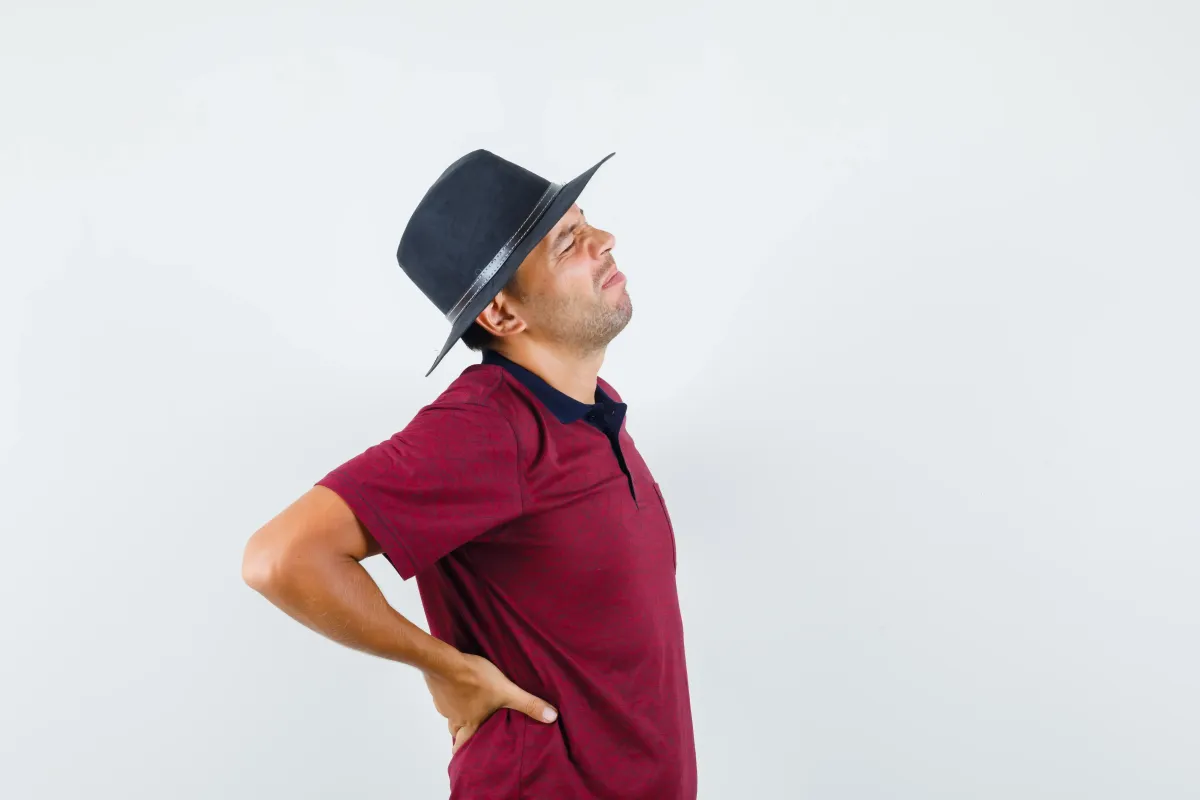Lumbar Spondylosis Treatment in NYC
Manhattan Physical Therapy

What Is Lumbar Spondylosis?
Lumbar spondylosis refers to age-related changes in the lower spine that gradually affect the discs, joints, and bones. These changes happen to everyone, but for some people, they lead to stiffness, nerve irritation, and chronic low back pain. The condition is especially common in adults over 50, but symptoms can develop earlier due to lifestyle, posture, or previous injuries.
Why Does Lumbar Spondylosis Develop?
The lower spine absorbs stress from every step, lift, twist, or bend you make. Over the years, the discs lose hydration and elasticity, reducing their ability to cushion the vertebrae. When discs shrink or weaken, the spine experiences more friction and instability. As a result:
Bone spurs can form and irritate nerves.
Ligaments may stiffen, limiting flexibility.
Bulging or herniated discs may compress nearby nerves.
Disc dehydration can lead to painful bone-on-bone contact.
These natural changes are the primary reason lumbar spondylosis develops, but several factors can worsen the condition:
Poor posture during desk work
Carrying excess body weight
A sedentary daily routine
Heavy repetitive lifting
High-impact sports
Genetic predisposition
What Symptoms Should You Watch For?
The most common symptom of lumbar spondylosis is persistent low back pain, especially after standing, walking, or long periods of sitting. But the condition can cause a wider range of discomfort depending on how severe the degeneration is and whether nerves are involved. Patients in NYC often report:
Stiffness in the lower back
Muscle spasms
Grinding or popping sensations when changing positions
Pain that travels to the buttocks or legs
Numbness or tingling in the legs, feet, or toes
Sciatica symptoms
Weakness in the lower extremities
If nerve compression is significant, mobility may decrease to the point where daily tasks become difficult. In rare but serious cases, severe compression can affect bladder or bowel control—an emergency requiring immediate medical care.
How Is Lumbar Spondylosis Treated?
There is no permanent cure for lumbar spondylosis, but the right treatment can slow its progression, manage symptoms, and dramatically improve quality of life. At Manhattan Physical Therapy, we focus on practical, patient-centered solutions that address both the symptoms and the underlying causes.
1. Personalized Physical Therapy
Physical therapy is one of the most effective non-surgical treatments for lumbar spondylosis. Our NYC physical therapy programs are designed to:
Improve spinal mobility
Reduce muscle tension
Strengthen the core and stabilizing muscles
Increase flexibility
Reduce nerve irritation
Support healthier movement patterns
2. Pain-Relief and Mobility Techniques
Depending on your symptoms, your treatment plan may include:
Manual therapy
Joint mobilization
Soft-tissue techniques
Neuromuscular re-education
Postural retraining
Aquatic therapy options
Which Exercises Help Relieve Lumbar Spondylosis Pain?
Gentle, consistent exercises play a major role in easing stiffness, improving flexibility, and strengthening the muscles that support the lower spine. At Manhattan Physical Therapy, we introduce patients to safe, guided movements that reduce pressure on irritated joints and nerves. Below are simple exercises commonly recommended for lumbar spondylosis. These movements can be done at home, but technique matters—your physical therapist will help you perform them correctly and adjust them based on your symptoms.
Pelvic Tilt
This exercise helps activate the deep core muscles and reduces tension in the lower back.
Lie on your back with your knees comfortably bent.
Tighten your abdominal muscles and gently press your lower back into the floor.
Hold the position for 5–10 seconds.
Relax and return to the starting position.
Perform 10 repetitions.
Knee-to-Chest Stretch
This stretch reduces tightness in the lumbar region and provides relief during flare-ups.
Lie on your back with both knees bent.
Bring one knee toward your chest using your hands for support.
Hold the stretch for 5–10 seconds.
Repeat the movement on the other side.
Complete 10 repetitions for each leg.
Cat-Cow Stretch
This movement encourages spinal mobility and relieves stiffness caused by muscle tension.
Begin on your hands and knees with your back in a neutral position.
Slowly arch your back and lift your head to create a gentle curve (cow position).
Then round your spine and tuck your chin toward your chest (cat position).
Move smoothly between both positions for 10 repetitions.
Hamstring Stretch
Tight hamstrings often contribute to extra strain on the lower back.
Lie on your back with one knee bent and the opposite leg straight.
Raise the straight leg upward and hold the back of your thigh.
Gently stretch the hamstring for 10–15 seconds.
Switch legs and repeat.
Bridging
This exercise strengthens the glutes and core muscles that stabilize the lumbar spine.
Lie on your back with your knees bent and feet flat on the floor.
Lift your hips toward the ceiling until your body forms a straight line from shoulders to knees.
Hold for 5–10 seconds.
Lower your hips slowly and return to the starting position.
Repeat 10 times.
These exercises are most effective when performed consistently and paired with a personalized physical therapy program. Your therapist will show you how to modify each movement to avoid irritation and maximize relief.
When Is Surgery Considered?
Surgery for lumbar spondylosis is usually considered only when:
Severe nerve compression causes persistent leg pain
Muscle weakness or numbness worsens
Conservative treatments fail to provide relief
A large disc herniation or spinal instability is present
Pain significantly limits daily activities
Surgical options can range from minimally invasive procedures to more advanced interventions, depending on the structural issues identified on imaging. Surgery aims to decompress nerves, stabilize the spine, or replace a severely damaged disc when necessary.
Even when surgery is recommended, physical therapy plays an important role before and after the procedure. Pre-operative therapy strengthens the body to support a smoother recovery, while post-operative therapy helps patients regain mobility and return to normal activities safely.
Real Stories From People Who Found Relief
“The real progress started only after a PT showed me how to move correctly and strengthen my core.” — Source: r/backpain discussion on lumbar spondylosis
“I stopped guessing with YouTube stretches. Once my therapist corrected my form, the pain reduced week by week.” — Source: r/backpain thread on lumbar spondylosis recovery tips
“My therapist pointed out that my glutes and deep core were weak. Strengthening them made a huge difference.” — Source: r/backpain user post on cervical + lumbar spondylosis
Call Manhattan Physical Therapy today at (212)-213-3480 to schedule an appointment.
What others are saying
Alexander Liu
"Everyone on the team at Manhattan Physical Therapy is super nice and caring. They were able to pretty quickly diagnose my knee and hip problems and immediately put me to work to reduce the pain.."
Henry Myerberg
"You're not just a patient when you come to the Manhattan Physical Therapy. You feel like family there. In particular, Erica with her colleagues John, Lidia and Joe not only fix and improve you physically, they make you feel welcomed and cared for.."
Hakyung Kim
"Everyone is so kind and helpful! my knee and hip pain have improved massively since starting Manhattan PT, highly recommend to anyone. special thanks to Bianca, Lidia, Joe, and John!"
Manhattan Physical Therapy
✆ Phone (appointments):
(212) 213-3480
Address: 385 5th Ave, Suite 503, New York, NY 10016

